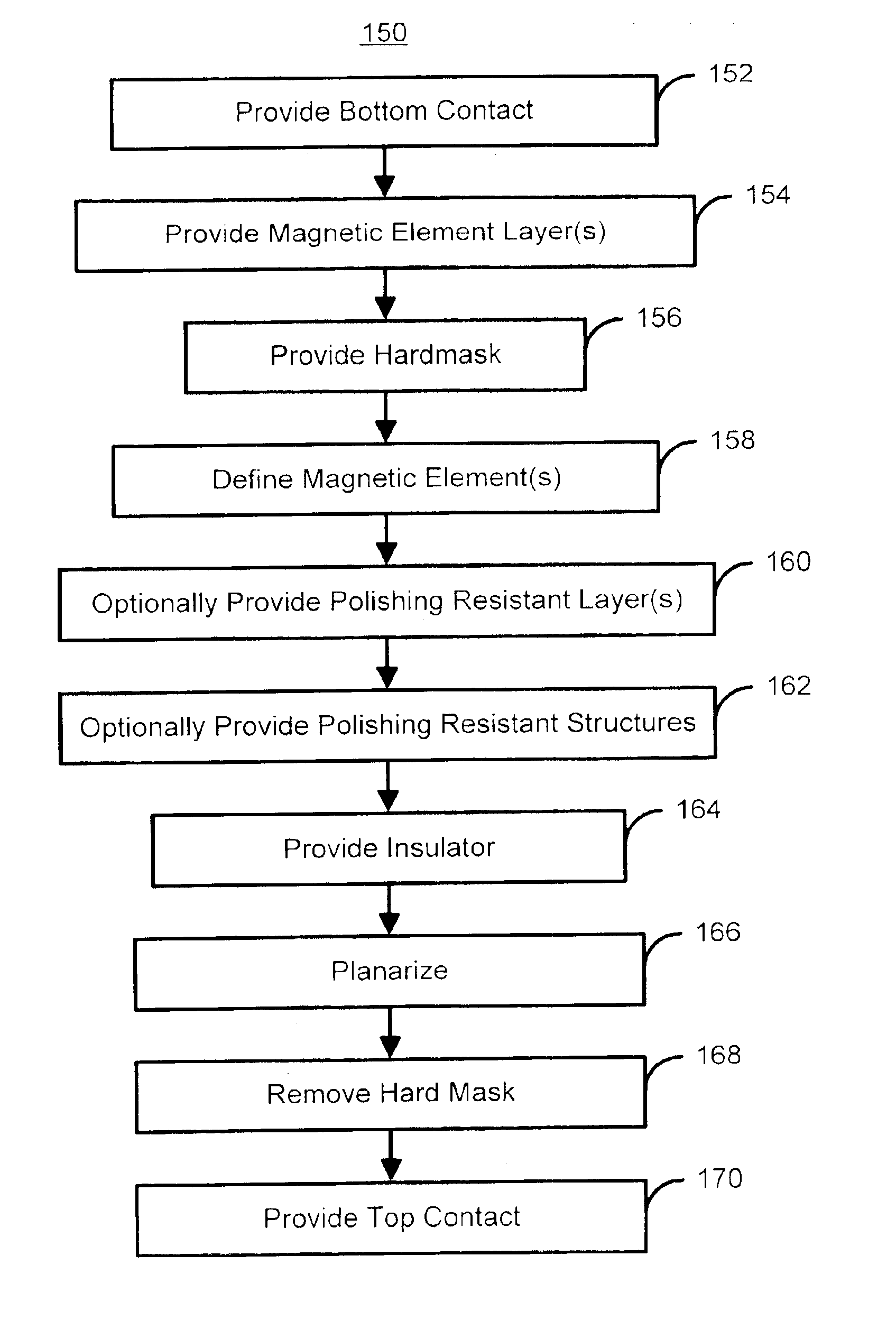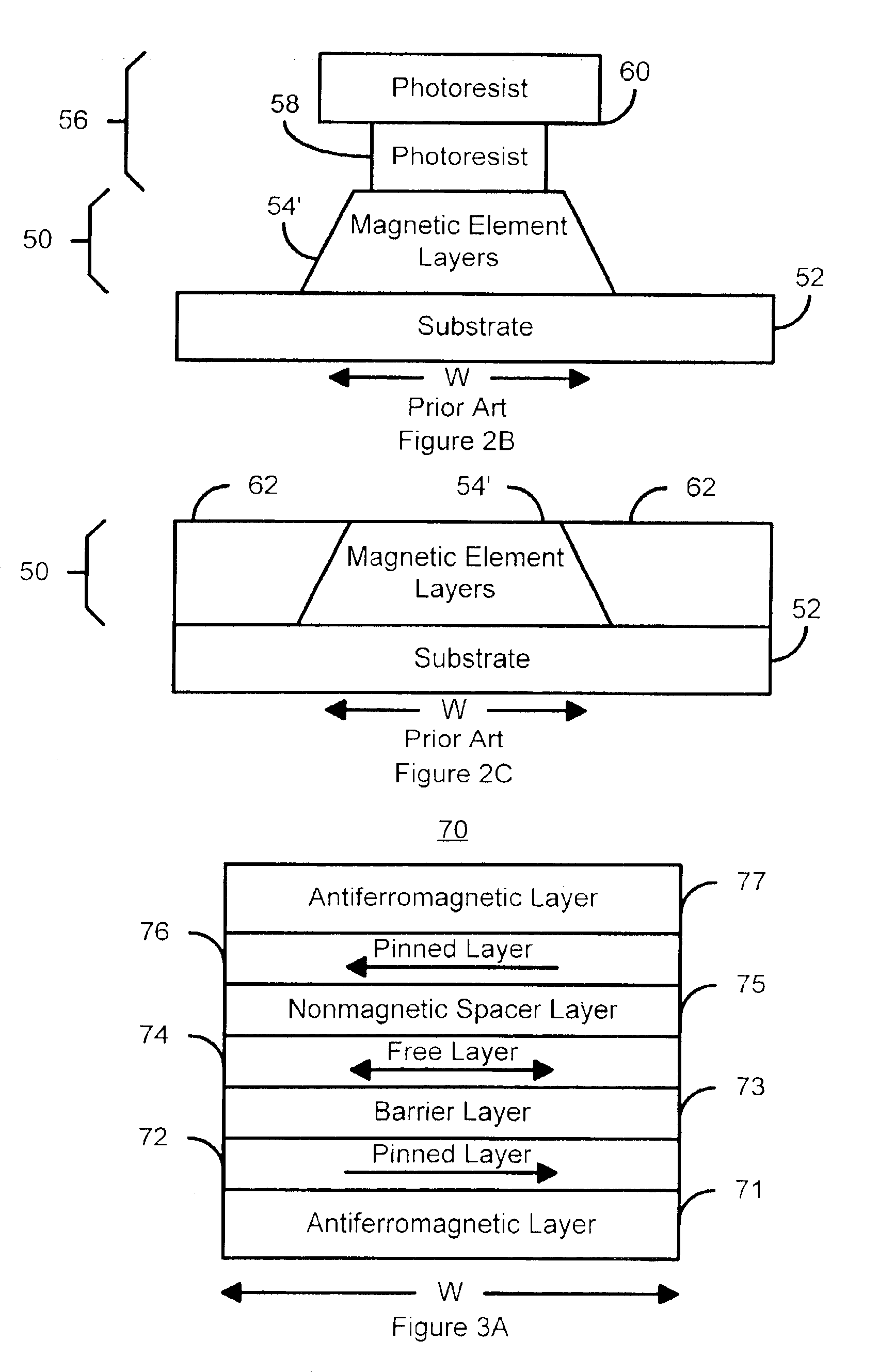Methods for providing a sub .15 micron magnetic memory structure
a magnetic memory structure and sub-.15 micron technology, applied in the field of magnetic systems, can solve the problems of b>60/b> not being able to reliably fabricate smaller magnetic elements, insulators b>60/b> and other features fabricated on the magnetic elements, such as contacts, not being in the appropriate places
- Summary
- Abstract
- Description
- Claims
- Application Information
AI Technical Summary
Benefits of technology
Problems solved by technology
Method used
Image
Examples
second embodiment
[0056]FIGS. 10A-10G depict system 400 including one embodiment of a magnetic element in accordance with the present invention during fabrication. When completed, the system 400 includes a magnetic element; such as the magnetic elements 70, 80, 90 and 90′; that employs the spin transfer phenomenon in order to switch the direction of magnetization of one or more free layers. FIGS. 10A-10G are described in conjunction with the method 150 depicted in FIG. 8. Referring to FIGS. 8 and 10A-G, FIG. 10A depicts the system 400 after step 152, formation of the bottom contact. The system includes substrate 402 having CMOS circuitry. The bottom contact 404 has been formed between insulators 406 that are preferably SiO2. The bottom contact 404 connects the magnetic element to CMOS based circuitry, which enables one element to be electrically selected from within a dense array. Also depicted are polishing resistant structures 408, such as Si3N4 structures. The Si3N4 structures 408 are thus formed ...
third embodiment
[0060]FIGS. 11A-11C depict system 500 including one embodiment of a magnetic element in accordance with the present invention during fabrication. When completed, the system 500 includes a magnetic element; such as the magnetic elements 70, 80, 90 and 90′; that employs the spin transfer phenomenon to switch the direction of magnetization of one or more free layers. FIGS. 11A-11C are described in conjunction with the method 150 depicted in FIG. 8. Referring to FIGS. 8 and 11A-C. The system 500 does not include Si3N4, or polishing resistant structures. Consequently, the system 500 resembles the system 300 until after the magnetic element is defined in step 158. Thus, 11A depicts the system after the insulator has been deposited in step 164, with step 162 being omitted. The system 500 includes a substrate 502 having CMOS circuitry. The bottom contact 504 has been formed between insulators 506 that are preferably SiO2. The bottom contact 504 connects the magnetic element to CMOS based ci...
fourth embodiment
[0063]FIGS. 12A-12C depict system 600 including one embodiment of a magnetic element in accordance with the present invention during fabrication. When completed, the system 600 includes a magnetic element, such as the magnetic elements 70, 80, 90 and 90′, that employs the spin transfer phenomenon in order to switch the direction of magnetization of one or more free layers. FIGS. 12A-12C are described in conjunction with the method 150 depicted in FIG. 8. Referring to FIGS. 8 and 12A-C. The system 600 does not include polishing resistant structures. Consequently, the system 600 resembles the system 300 until after the magnetic element is defined in step 158. Thus, 12A depicts the system after the insulator has been deposited in step 164, with step 162 being omitted. However, the step 164 that formed the insulator also includes forming a polishing resistant layer.
[0064]Thus, the system 600 includes a substrate 602 having CMOS circuitry. The bottom contact 604 has been formed between i...
PUM
 Login to View More
Login to View More Abstract
Description
Claims
Application Information
 Login to View More
Login to View More - R&D
- Intellectual Property
- Life Sciences
- Materials
- Tech Scout
- Unparalleled Data Quality
- Higher Quality Content
- 60% Fewer Hallucinations
Browse by: Latest US Patents, China's latest patents, Technical Efficacy Thesaurus, Application Domain, Technology Topic, Popular Technical Reports.
© 2025 PatSnap. All rights reserved.Legal|Privacy policy|Modern Slavery Act Transparency Statement|Sitemap|About US| Contact US: help@patsnap.com



